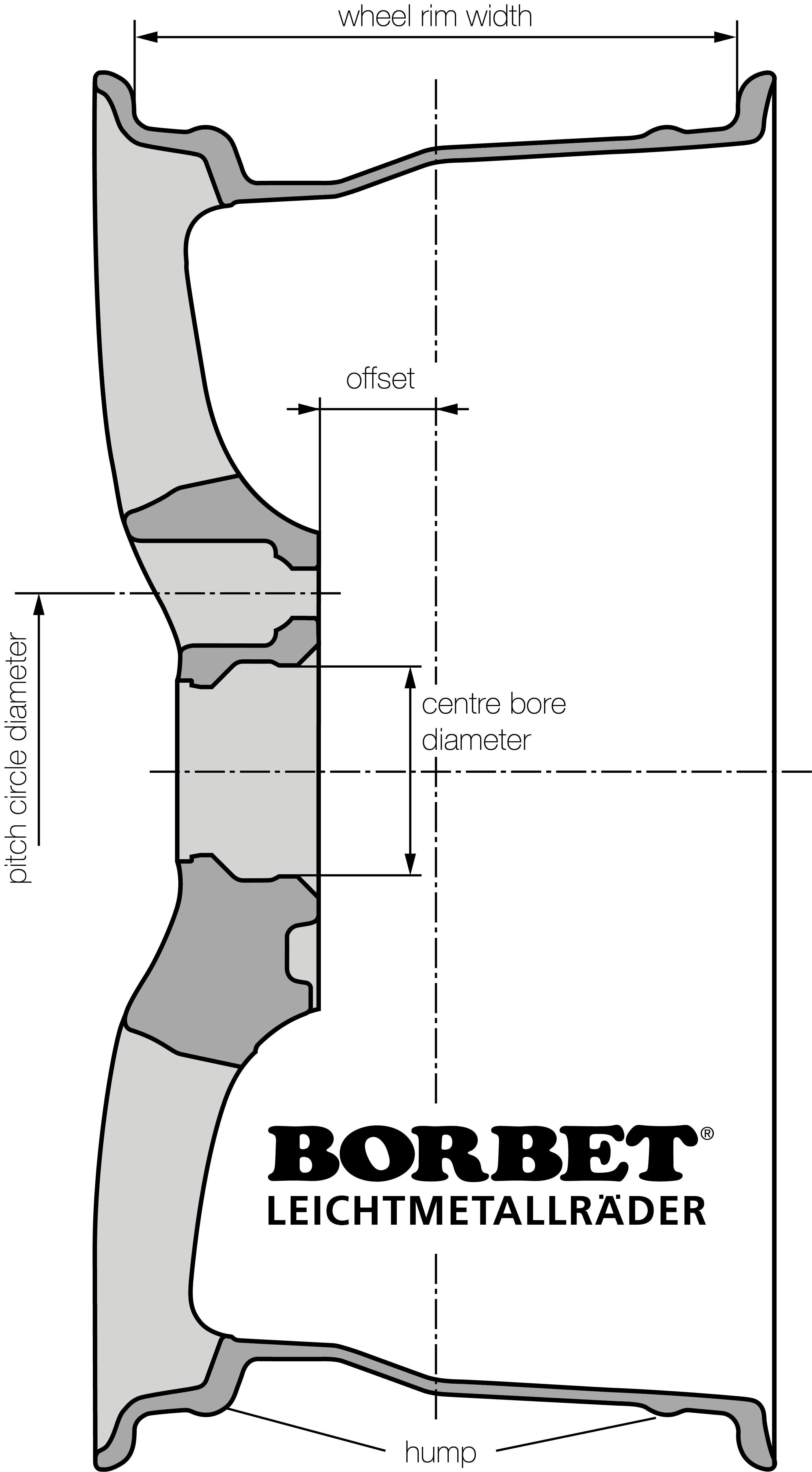
KBA number
A KBA number is issued by the German Federal Motor Transport Authority in Flensburg. On all BORBET specialist trade wheels,
this number can be found on the outside near the ventilation hole. The KBA number guarantees that the wheel is a “standard
manufactured part”. This means you can be sure that there will be no issues with the TÜV registration even after several
years. The KBA number is also the basis for the Vehicle Type Approval – without a KBA number, a TÜV registration would
need to be undertaken.
Technical component report, TÜV assessment, Vehicle Type Approval
There is a huge difference between a technical component report and a Vehicle Type Approval: If a Vehicle Type Approval
is in place (as is the case with 99% of our wheels) and the corresponding tyres do not need to be amended, then it is
not necessary to acquire separate expert approval. However, if conditions such as “tyre tread coverage” must be observed,
then even wheels with Vehicle Type Approval need to be registered. If a wheel “only” has a technical component report,
then they need to be registered without exception, even if there are no other requirements to fulfil. However, even
technical component reports have their benefits, especially for guaranteeing quick TÜV approval for new vehicles with
a component report, as opposed to a complete update to the Vehicle Type Approval.
TPMS
Since 1 November 2014 all new vehicles must be fitted with a tyre pressure monitoring system. In doing this, a
distinction must be made between a direct and indirect system. While the latter solely measures the tyre pressure
across the rolling circumference, direct systems include special sensors which are installed in each wheel. These
sensors are available from many manufacturers on the market, with 99% of them compatible with our product portfolio.
ECE
An ECE number is issued by the German Federal Motor Transport Authority in Flensburg – as is the KBA number – and can
be seen embossed on each ECE-approved wheel in such a way that it is visible from the outside. ECE-approved wheels
precisely fulfil standard wheel requirements in terms of rim width and offset, as well as the inner contour (for brake
release), and as such can be used as they are. They do not always use centring rings and often use standard mounting
components. There is NO requirement to carry type-approval certificates/ECE systems.
CoC documents
Certification of Conformity documentation includes all tyre and wheel sizes released by the manufacturer for a
particular vehicle. Since October 2006, most newly issued vehicle registration certificates have only included
the wheel and tyre combination, which is checked when the vehicle is sold. All other permissible wheel and tyre
combinations can be derived from the CoC documentation.
Which tyre sizes am I allowed to have on my vehicle?
The tyre sizes that can be fitted are listed on the attachment to the Vehicle Type Approval/ECE documentation.
Only standard tyres are included in the ECE documentation while several other tyre measurements are listed in the
Vehicle Type Approval (which is often supplementary to ECE). Whether a specific tyre size needs additional TÜV
approval can depend on the width or even the offset. However, many tyre sizes from a Vehicle Type Approval can
be used WITHOUT TÜV registration, even if the size is NOT listed in the vehicle/CoC paperwork.


